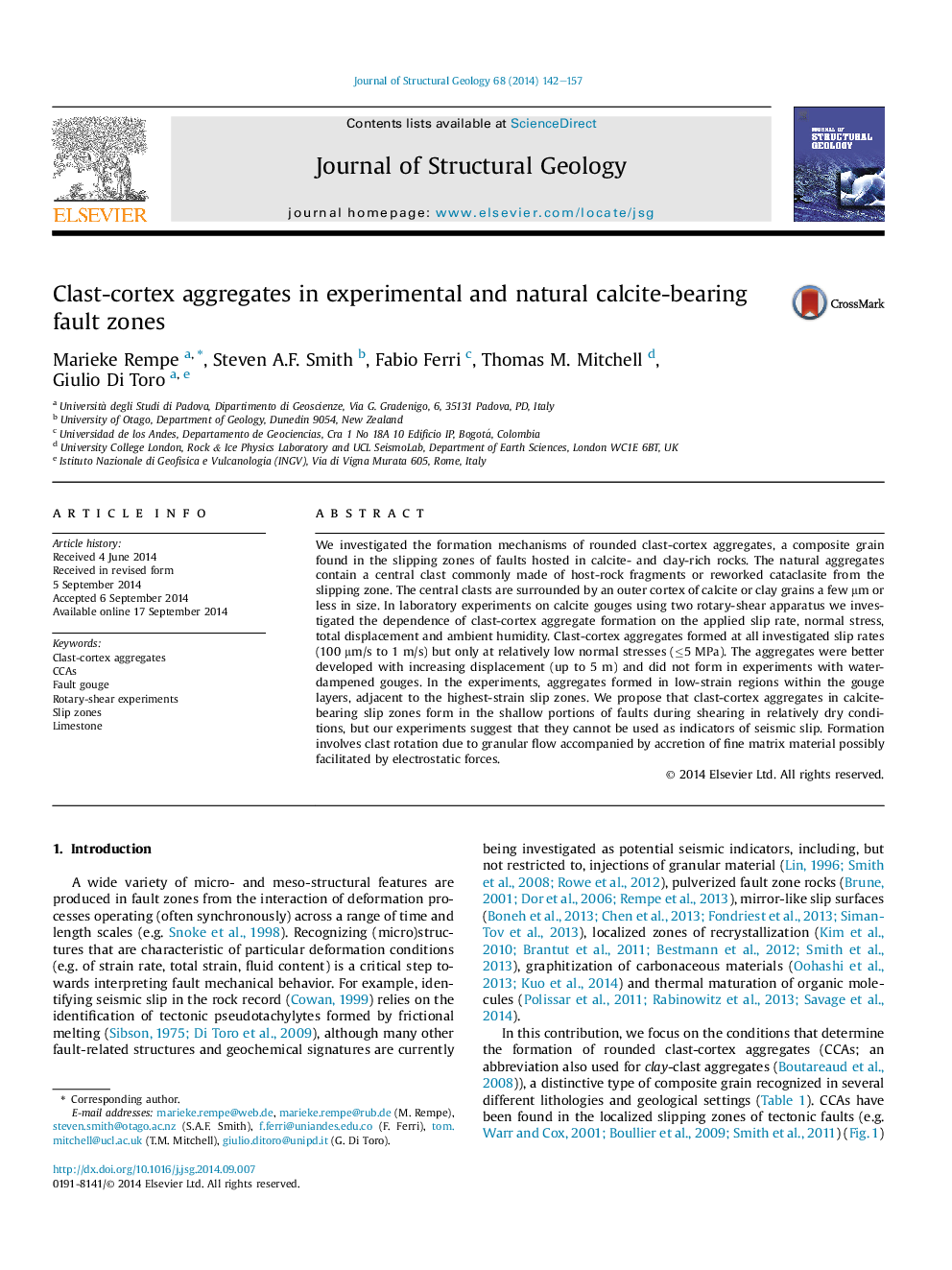| کد مقاله | کد نشریه | سال انتشار | مقاله انگلیسی | نسخه تمام متن |
|---|---|---|---|---|
| 4733079 | 1356985 | 2014 | 16 صفحه PDF | دانلود رایگان |
• Clast-cortex aggregates (CCAs) produced experimentally in calcite gouges.
• Favored by low normal stresses and room-dry conditions.
• Developed at all investigated slip rates (0.0001 m/s to 1 m/s).
• Formation by grain rolling and accretion at intermediate strains.
• CCAs not a reliable indicator of seismic slip in fault zones.
We investigated the formation mechanisms of rounded clast-cortex aggregates, a composite grain found in the slipping zones of faults hosted in calcite- and clay-rich rocks. The natural aggregates contain a central clast commonly made of host-rock fragments or reworked cataclasite from the slipping zone. The central clasts are surrounded by an outer cortex of calcite or clay grains a few μm or less in size. In laboratory experiments on calcite gouges using two rotary-shear apparatus we investigated the dependence of clast-cortex aggregate formation on the applied slip rate, normal stress, total displacement and ambient humidity. Clast-cortex aggregates formed at all investigated slip rates (100 μm/s to 1 m/s) but only at relatively low normal stresses (≤5 MPa). The aggregates were better developed with increasing displacement (up to 5 m) and did not form in experiments with water-dampened gouges. In the experiments, aggregates formed in low-strain regions within the gouge layers, adjacent to the highest-strain slip zones. We propose that clast-cortex aggregates in calcite-bearing slip zones form in the shallow portions of faults during shearing in relatively dry conditions, but our experiments suggest that they cannot be used as indicators of seismic slip. Formation involves clast rotation due to granular flow accompanied by accretion of fine matrix material possibly facilitated by electrostatic forces.
Figure optionsDownload high-quality image (292 K)Download as PowerPoint slide
Journal: Journal of Structural Geology - Volume 68, Part A, November 2014, Pages 142–157
